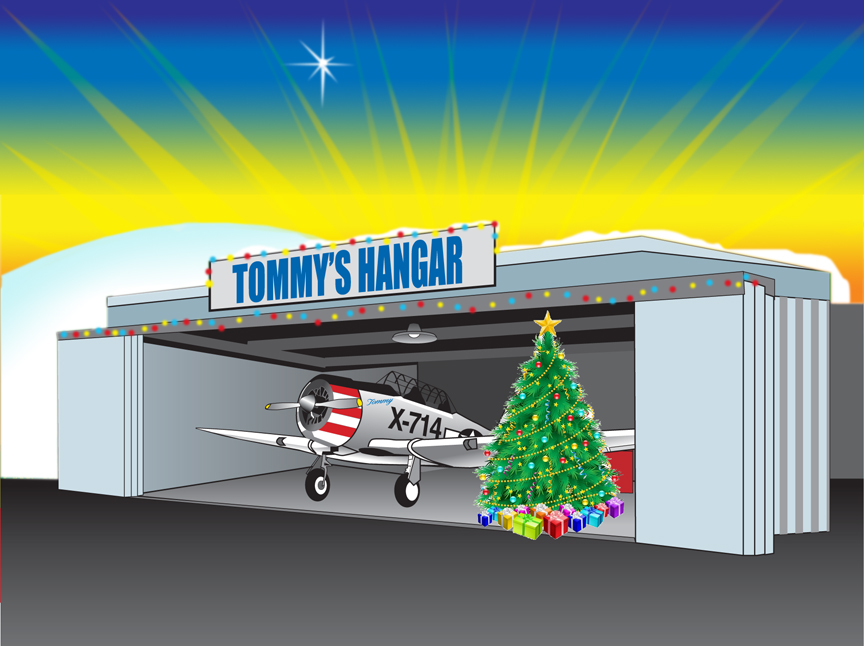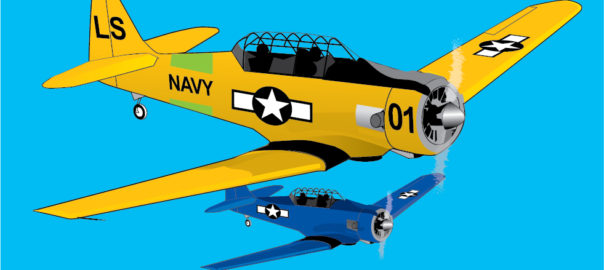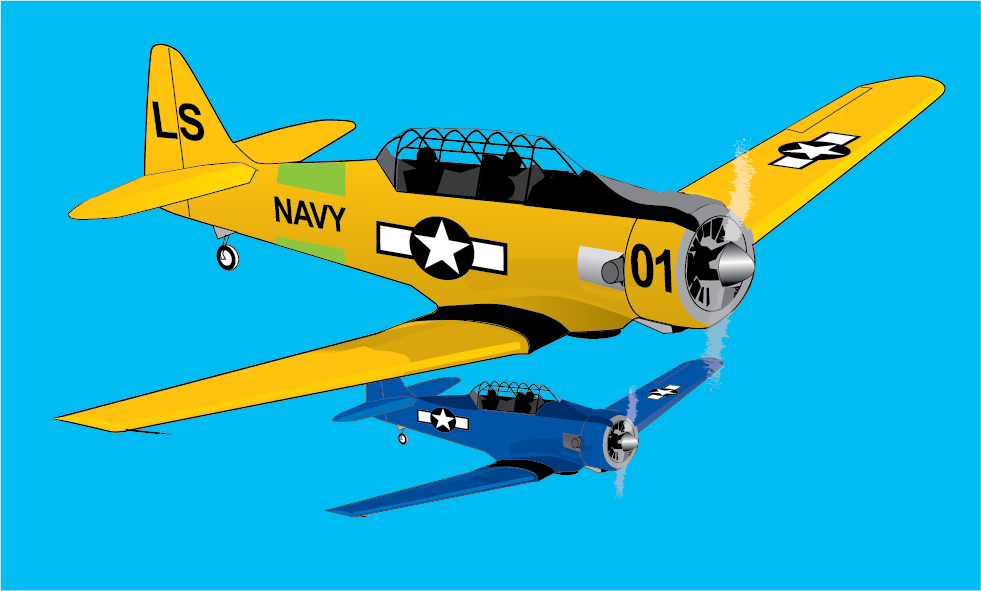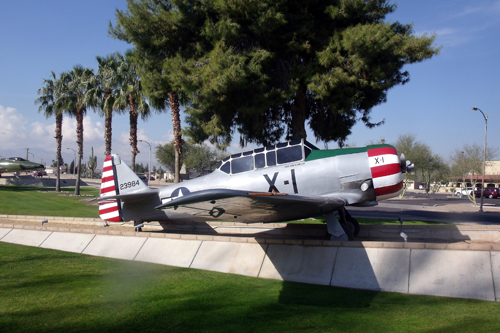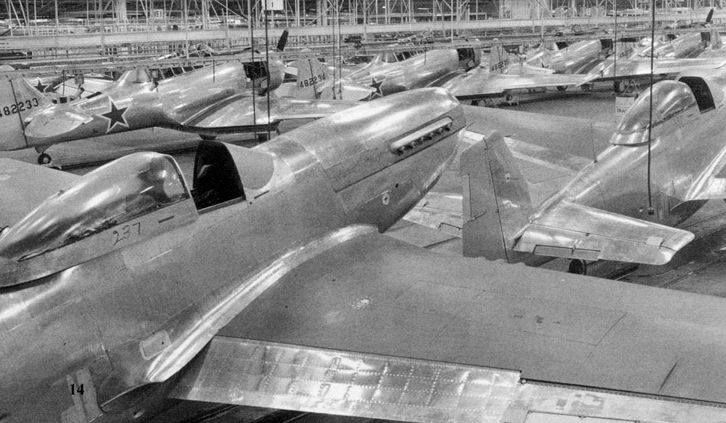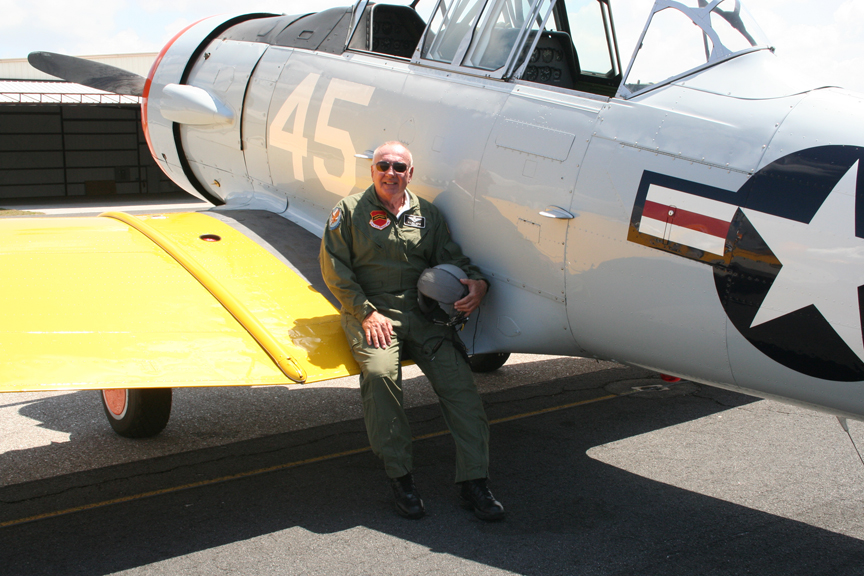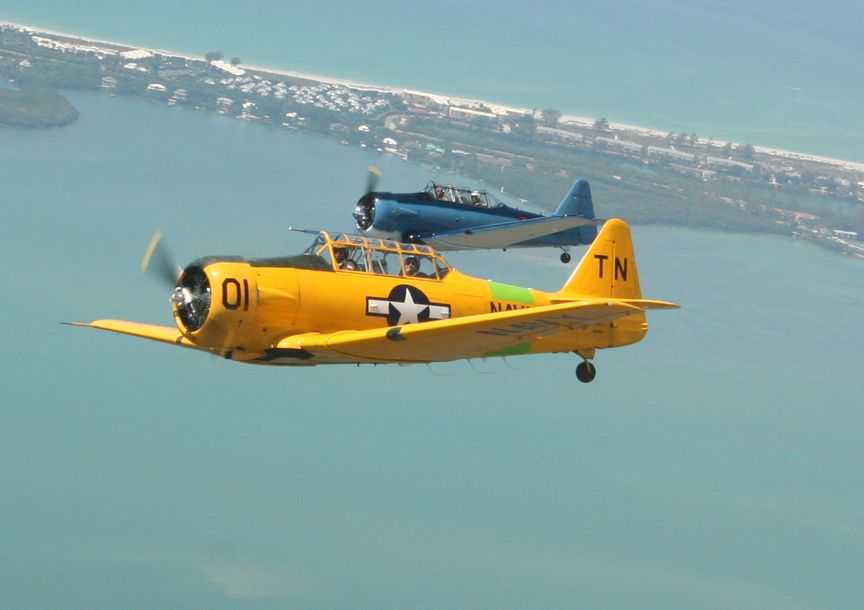from Tommy’s point of view
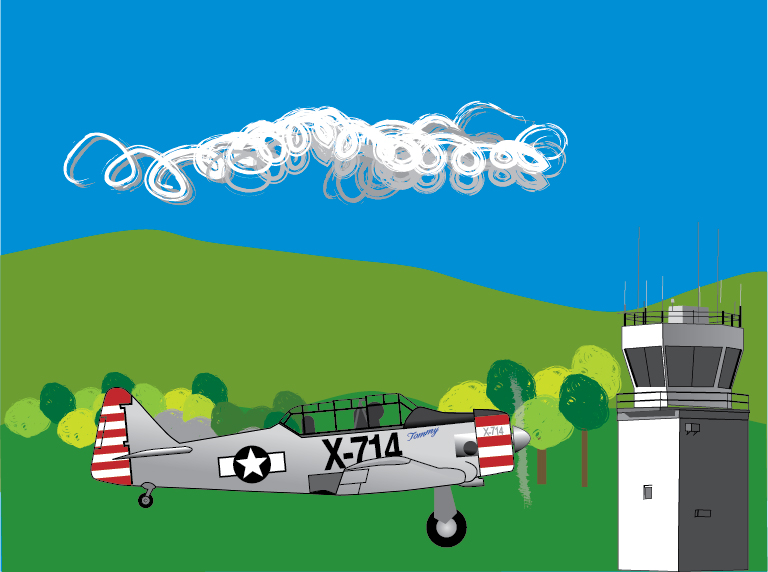
The light over Tommy’s canopy clicked off and Tommy was brought to the quiet and calm of Tommy’s Hangar. It was quiet outside, just an occasional car passing on Miry Brook Road that ran behind the hangar and a few birds chirping on the roof.
Captain Billy had left a few days ago but said that he would be back to take Tommy for a spin around the pattern. He wanted to give Tommy some exercise and he needed to do his three takeoffs and landings to keep his currency up. Just Tommy and Billy having some fun flying. Sounded good to him. He waited as patiently as he could. It had been a while since he had been outside.
Just then the silence was broken by the sound of a Corvette coming around the corner and heading up the ramp. It seemed to rumble as it idled up to the hangar. Captain Billy was here.
The small door of the hangar opened and there was Billy in his flight suit carrying his helmet bag.
“Morning Tommy, sorry it took so long but we were working on the book and time got away from us,” he said. Captain Billy and his daughter Laura were putting the final touches on his children’s series of books about he and Tommy.
“Well, lets get these doors open and you pre-flighted so we can go flying. Your fuel tanks are half full, so we have plenty for three trips around the patch. I’ll just do a walk-around and check the oil here in the hangar and we can be on our way.”
Soon Tommy was rolled outside, Captain Billy was on board going thru the Before Start Check List. Today was a cloudy day, no sun so far and from the looks of the clouds there would not be.
Billy sensed Tommy’s concern and said, “I checked the local weather. The base of the clouds is around 3500 feet and no sign of rain this morning. At our pattern altitude of 1500 feet, we should be well clear of any clouds. It is a good morning to get this done.”
With that said, switches on, Tommy felt the electricity flow, fuel pump engaged and soon, “Clear Prop” from Billy as the prop spun and the big radial came to life with a puff and a ROAR!
With the brakes released the taxi to runway 08 had begun. It was a short taxi and soon they were in Position for takeoff. “Before Takeoff Checklist complete,” Billy said. Flaps set, lined up and power advanced, Tommy started to roll down the runway.
As the big propeller pulled Tommy down the runway, he could feel Billy dancing on the rudder as the power tried to pull him to the left.
(When a taildragger aircraft is in a nose high attitude, the propeller blade on the right has a greater pitch to bite the air and so tries to turn the aircraft to the left, it’s called “P-Factor.”)
As the speed increased, Tommy could feel the wind over the vertical and horizontal tail increase so his controls, rudder, and elevator became more useful in controlling him. He could feel the tail start to rise as the air pressure flowing under the horizontal surface was greater that the weight of the tail. Also, Tommy was now in a level attitude, so P-Factor was less.
At the same time, he sensed the wind flowing over and under his wings. The airfoil design of the wing caused the wind over his wings to move faster then the wind under them, causing a lower pressure on top than on the bottom.
As the forward speed increased, Tommy felt the wind increase over the ailerons as Billy used the control stick to keep the wings level and the rudder now kept him straight.
Tommy then felt the elevators move in the air slipstream as Billy pulled back on the control stick ever so gently, raising the elevators. With that the tail moved downward, Tommy seemed to pivot around his center of gravity, or CG, the wing angle increased, more right rudder to keep him straight, The air pressure was greater under the wing than over it and Tommy was airborne once more.
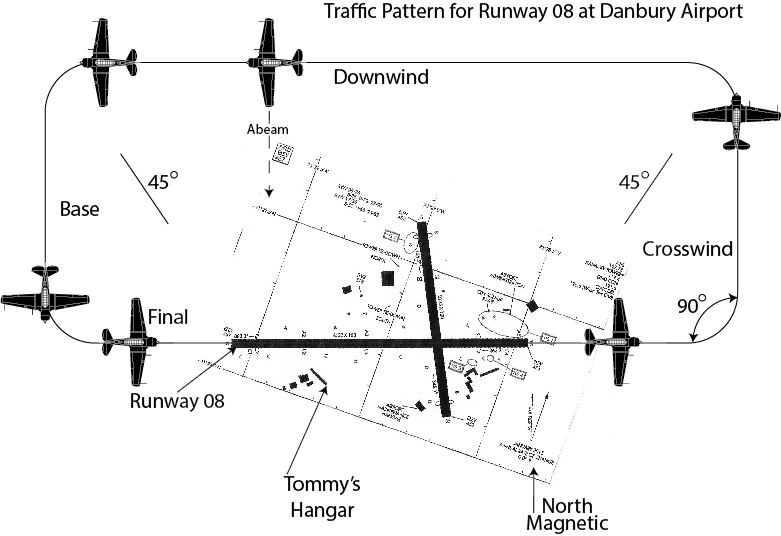
Tommy heard Billy call, “Gear Up” and he sensed his landing gear retract into their place in the wing. With this decrease in drag Tommy could feel the speed start to increase.
Next, he heard “Flaps Up” and felt a change in the pitch as Billy compensated with the movement of the trim tab on the elevator. With all the drag eliminated, Tommy was now accelerating to his cruise climb speed of 110 mph, and Billy set the throttle and propeller controls for climb power.
Captain Billy moved the control stick continuously in small smooth movements, forward and back, left and right, to keep the attitude and speed at 110 mph. The rudder keeping him on heading. They climbed up to 1200 feet, and Tommy felt the ailerons move.
(In flight an aircraft has a center of gravity that it will balance on. Any control movement will cause the aircraft to pivot about that point. See “Flight, A Balancing Act” which can be found here in Tommy’s Hangar)
The traffic pattern at Danbury Airport is a left-handed rectangle. All turns in the pattern are to the left. Tommy now felt the aileron on his left wing move up into the slipstream, as the right one moved down. He felt a slight loss of lift on the left wing and some drag, causing his wing to move downward and the aircraft to yaw to the left ever so slightly from the drag. With the downward movement of the right aileron, there was an increase in the airfoil, causing a lifting of the right wing. Tommy felt the movement of the left rudder pedal and then movement of the rudder to the left, as he began what is called a coordinated turn. Once the angle of bank was reached, in this case 15 degrees, he felt the ailerons move back to center. He then maintained that bank angle until just before reaching the Crosswind Leg of the pattern on a heading of 350 degrees.
Tommy felt Billy’s hand on the control stick reversing that process -now the aileron on the right wing moved up and the one on the left move down, causing the same results as before, only in the opposite direction. Tommy wings were now level as Billy brought the aileron controls back to neutral, but with the elevator still in a positive pitch climbing to 1500 feet.
Upon reaching 1500 feet, Tommy felt Billy pull the throttle back to a cruise RPM of 2000 as the big radial reduced its throaty sound. As he felt the elevator move downward to neutral, Tommy was now level at 1500 feet and with an airspeed of 120 miles per hour as Billy said, “After Takeoff Checklist complete.”
As soon as there was a 45-degree angle from the trailing edge of his left wing to the end of the runway they had just taken off from, he felt the control stick move the ailerons and the rudder move to start another 90 degree left turn. This put Tommy on the downwind leg flying 180 degrees from the takeoff heading of 080. He was now flying a heading of 260 degrees.
Tommy’s wing was in an almost level attitude. All aircraft wings must have a slight positive angle when the aircraft is flying level. It is called the “Angle of Incidence” and it provides the wing a positive lift. Upon reaching a point on the downwind leg almost at mid field, Tommy heard Billy call for “Before Landing Checklist flaps ten.” With the movement of the flaps downward came a pitch change, as the wing airfoil changed shape, corrected by Billy through the elevator trim tab holding Tommy at level flight.
Just abeam the end of the runway, Tommy heard Billy call, “Gear Down,” as he felt the landing gear lower from its place in the wing. This caused some drag, slowing Tommy with a slight pitch change. Billy then adjusted the Propeller and Throttle controls for landing. Tommy felt the elevators move downward slightly as well, as he began a descent toward the turn to the base leg at an altitude of 1200 feet and slowed to 100 miles per hour.
Tommy saw that he was again at 45 degrees to the end of the runway. Billy moved the control stick to the left causing the ailerons to move again and start a coordinated turn to a heading of 170 degrees. Off to his left, Tommy saw the end of the landing runway with its white markings and the number 08, which stood for a heading of 080.
Billy called “Flaps twenty,” another pitch change controlled through the elevator trim located next to the throttle quadrant on the left side of the cockpit. All this time Billy constantly moved the controls to keep Tommy stabilized in a shallow descent at what was now 100 miles per hour.
Just prior to reaching that imaginary line drawn from the runway centerline of runway 08, “Flaps Land, Landing Checklist complete,” was the call from Billy, as he moved the control stick to start a turn to the final approach leg. With the Propeller control now set to Increase RPM, he adjusted the throttle to maintain 90 miles per hour as they descended toward the runway.
The ground was moving fast now under Tommy, as Billy looked down the runway to get the proper attitude for landing. With a spot picked out just past the numbers 08, over the fence at 65 miles per hour, with Billy constantly making small corrections. The pitch attitude was changed as the elevator was raised to put Tommy in a landing attitude and flare slightly nose high. The throttle reduced as Tommy slowed and sensed a loss of lift on his wings and he settled onto the runway with a chirp, chirp from his main wheels. With the throttle reduced to idle, the tail became heavier than the pressure on the tail holding it up, and the tailwheel chirped as it also settled onto the asphalt.
Billy continued to dance on the rudders as they slowed to the speed of a slow walk. Turning right off of the runway, Billy brought Tommy to a full stop and preformed an after landing check, brought the flaps up, called “After Landing Checklist complete” and finally said to Tommy, “Nice job my friend in flight, just two more like that and I will be tailwheel landing current again.”
With a call to the tower, which had just announced it was open at 7am, the two taxied back to runway 08 for two more little trips around the pattern. It was a good day to fly.
After two more pattern flights, Billy taxied Tommy back to the hangar and decided to give Tommy a bath. Afterward, he was pushed back in the hangar, Billy placed the chocks and towel-dried Tommy. Then, the white cotton bedsheet covers were placed on Tommy’s wings and tail. The clouds remained, as did Billy, who entered the flight data in his and Tommy’s logbooks as the radio played some 80’s Rock and Roll, and the two old friends spent the day together. Billy settled into his blue seashell chair, as they watched the day, the airplanes, and the clouds, go by.
Blue Skys and Tailwinds
Captain Billy
